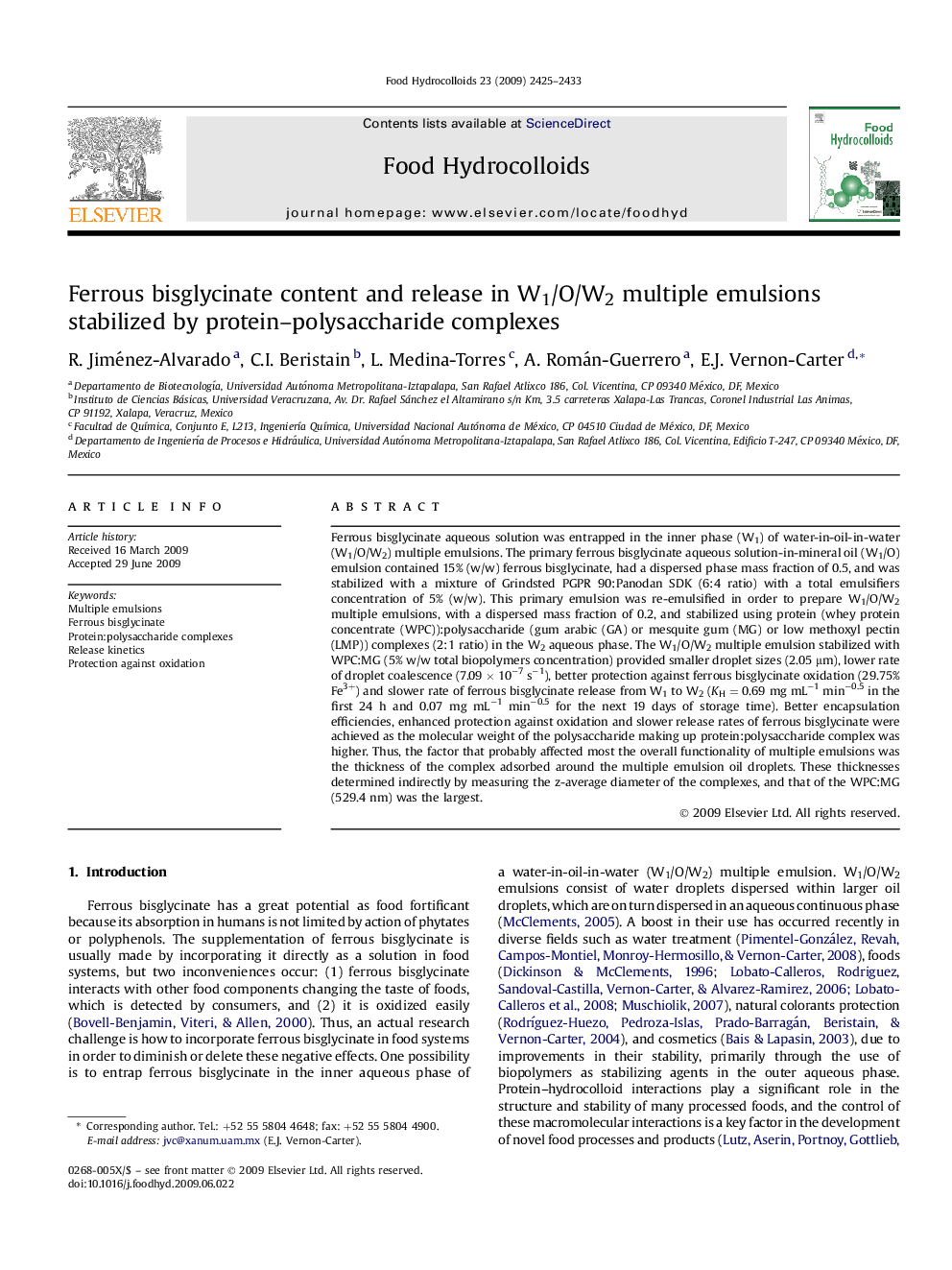| کد مقاله | کد نشریه | سال انتشار | مقاله انگلیسی | نسخه تمام متن |
|---|---|---|---|---|
| 605489 | 880346 | 2009 | 9 صفحه PDF | دانلود رایگان |

ABSTRACTFerrous bisglycinate aqueous solution was entrapped in the inner phase (W1) of water-in-oil-in-water (W1/O/W2) multiple emulsions. The primary ferrous bisglycinate aqueous solution-in-mineral oil (W1/O) emulsion contained 15% (w/w) ferrous bisglycinate, had a dispersed phase mass fraction of 0.5, and was stabilized with a mixture of Grindsted PGPR 90:Panodan SDK (6:4 ratio) with a total emulsifiers concentration of 5% (w/w). This primary emulsion was re-emulsified in order to prepare W1/O/W2 multiple emulsions, with a dispersed mass fraction of 0.2, and stabilized using protein (whey protein concentrate (WPC)):polysaccharide (gum arabic (GA) or mesquite gum (MG) or low methoxyl pectin (LMP)) complexes (2:1 ratio) in the W2 aqueous phase. The W1/O/W2 multiple emulsion stabilized with WPC:MG (5% w/w total biopolymers concentration) provided smaller droplet sizes (2.05 μm), lower rate of droplet coalescence (7.09 × 10−7 s−1), better protection against ferrous bisglycinate oxidation (29.75% Fe3+) and slower rate of ferrous bisglycinate release from W1 to W2 (KH = 0.69 mg mL−1 min−0.5 in the first 24 h and 0.07 mg mL−1 min−0.5 for the next 19 days of storage time). Better encapsulation efficiencies, enhanced protection against oxidation and slower release rates of ferrous bisglycinate were achieved as the molecular weight of the polysaccharide making up protein:polysaccharide complex was higher. Thus, the factor that probably affected most the overall functionality of multiple emulsions was the thickness of the complex adsorbed around the multiple emulsion oil droplets. These thicknesses determined indirectly by measuring the z-average diameter of the complexes, and that of the WPC:MG (529.4 nm) was the largest.
Journal: Food Hydrocolloids - Volume 23, Issue 8, December 2009, Pages 2425–2433